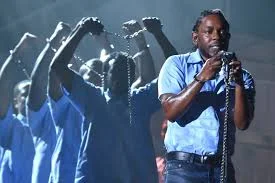Don’t be Afraid of Feminism
/The Importance of Women and Gender Studies Courses at X
With women’s week having just ended here in Antigonish – and with all the different events and keynote talks that are going on this month – I was thinking a lot about how much my perspective on life and other women has changed since choosing to major in Women and Gender Studies.
I think, not to be completely biased, that the most influential courses a student can take in their undergraduate degree would have to be women and gender studies classes.
Yes, this is my major, so I obviously have a lot of wonderful things to say about this department, the professors, the courses and material that we learn in class. But there are so many other reasons as to why these courses are so fundamental in a young person’s learning.
Before you get tired of me rambling and decide to skip this article to read something else, please read a little bit of it; maybe it’ll even convince you to take a class in this area.
Before I even started taking courses in the WMGS department, I thought I had a relatively good understanding of feminism, issues of systematic oppression around the world and anything that was related to the equality/inequality of how humans are treated. Turns out I knew pretty much nothing.
In my first intro class with Dr. Lisa Pasolli, I got a bit of a taste of everything. The big thing that I learned from that class was intersectionality, which is something that everybody should be interested in.
Intersectionality is a concept used to analyze how all women throughout the world, whether they be Indigenous, Black, Hispanic, Asian, Middle Eastern, trans, bi or a lesbian, are impacted by systems of oppression and how they differ from one another.
This concept opened my eyes to how differently women and men are treated as well as ways to tackle these systems of oppression and help our sisters, mothers, daughters, aunts, cousins and any woman that you can think of.
Now that I’m in my third year, a class that I’ve been taking – Critical Race and Sexuality in Canada with Dr. Rachel Hurst – in my opinion should maybe be mandatory for every student to take.
In the past three months of being in that class, I have learned more than I have in some in my year long courses (no shade). In this class we analyze Canada, we learn about the different systems of power within Canada and how it has had an impact on our own people: namely, indigenous peoples and black people. There are issues going on in Canada that frankly I was not aware of, and it is likely that many other students are not either.
Simply a few examples: the Japanese internment camps that happened in Canada during WWII, or the reality of how black people are treated like criminals in Canada, black men being carded in the streets of Toronto.
Most Canadians have a blanket over their eyes thinking that this country is a country of freedom, a land where no wrong can happen. That is so far from the truth. Yes, we do live in a country that when compared to other countries is doing a bit better, but when you look closely, we’ve still got a long way to go before we can claim to be the ‘best’ country in the world when it comes to equality and how we treat others.
If you’ve been avoiding taking a WMGS class because of how you see feminism portrayed in the media and you think that women are these men hating monsters, that’s not what it is. There are a lot of great advocates for feminism that are doing a great job, but there are also quite a few folks that are skewing the word feminism and making it only for them (white feminism) or using the word feminism without actually understanding it and standing up for feminist issues.
If you’re not interested in feminism because you think blah blah blah it’s only for women, a) you’re wrong, feminism is for everybody, and b) you should be taking more interest into women’s rights because, well… you’re a human, are you not?
Maybe you’ve been wanting to take a WMGS class, but you cannot find anything to fit your schedule or your program; that’s fair, it can be very limiting. This is why each program should have classes dedicated to pairing your degree with women and gender studies related course. I’m aware that that is another issue altogether, but it’s something worth looking into and fighting for.
Feminism is for everybody: it’s beautiful, it’s growing, and forever changing. The future of society relies on feminism.
So, don’t be scared. You know what, maybe be scared! Be nervous to not know about something, but then take that fear and push yourself a little further to educate yourself. You’re not only educating yourself, but you’ll then also be helping those around you who might not know as much, and you can take the time to educate them as well. Education is bliss!

















